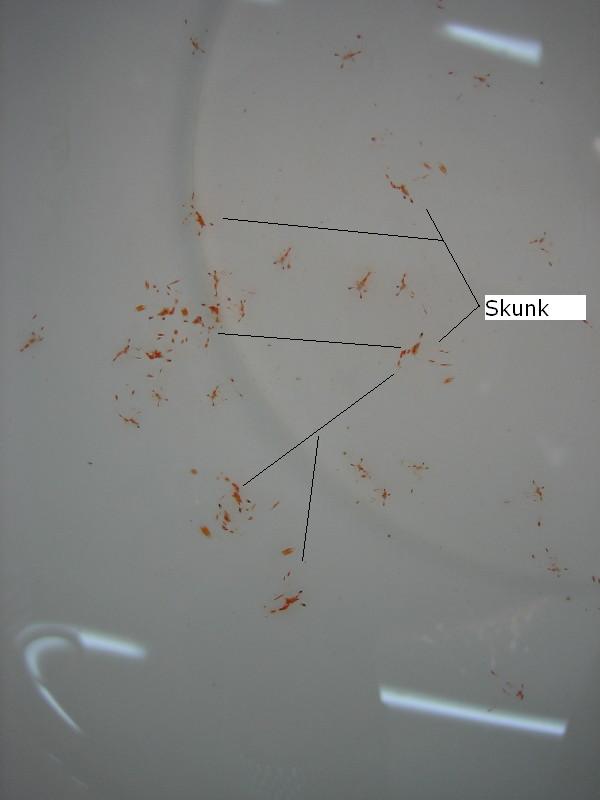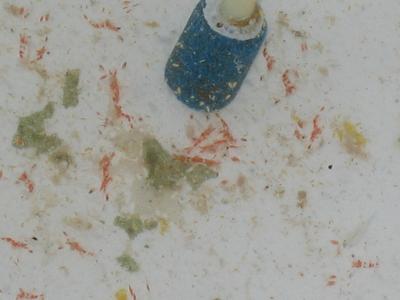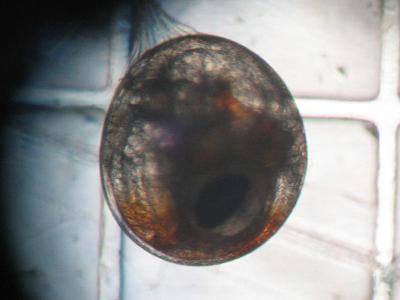-
Posts
10,123 -
Joined
-
Last visited
-
Days Won
17
Content Type
Profiles
Forums
Gallery
Everything posted by FuEl
-
Is everything real? Love your scaping..resembles the triangle concept..
-
A mixed rearing batch of skunk and blood shrimp larvae. Blood shrimp larvae are the smaller ones, not as red as skunk larvae and are light purple. They were intended as food..but the skunk larvae don't seem to enjoy them too much. They prefer crab eggs.
-

Extreme polyp extension from birdnest
FuEl replied to blueheaven's topic in SPS and Advanced Reefkeepers Forum
Even fish food which release certain chemicals can cause them to extend polyps. Just like how cyclopeeze entices sun corals to open up. -
You can increase mesh size...or the bigger the sieve the less chances of it getting clogged.
-
Looking great..nice shelves for corals..
-
Or you can attach it to the intake of canister filters. Basically it acts as a screen to diffuse suction pressure.
-
Nice shrimp..one of the more peaceful boxers although they are still aggressive towards other boxers. I had a purple boxer, added a S. zanzibaricus with it as I thought the smaller purple boxer will leave it alone. To my surprise it chased the other boxer which was easily 3-4 times its size. Even got a bounty of one claw. Other than that it's not aggressive to small fish from what I observed. Yes they are shy compared to larger boxer species but once you locate where they hang out they tend to stay around the same area. Feeding is probably a good way of locating it. Great if you could get a mated pair. Or you could try your luck with pairing (keep them apart but let them see each other in the same tank for the first few days). You can easily identify a female by the presence of eggs. If not gravid, females are usually stouter in appearance and have a broader head when viewed from above.
-
Good stuff for those people keeping tiny and delicate animals. Probably even good for anemones. Basically a cut section of a pvc pipe, mesh on the sides (silicon works good in sealing), and a hole drilled to fit a smaller pvc pipe which will fit into an overflow hole (if you use one in place of a conventional overflow). Size of the mesh depends on what animals you keep.
-
Hmmm..a pic of the babies..taken at 48 days old in a temporary feeding station. Grown much bigger as seen against the air stone and already in their final larval stage. Hopefully settle soon..
-
I seriously doubt a sandshifting seastar is fast enough to catch copepods or even amphipods. Perhaps the only thing it could feed on is detritus (which will indirectly affect your pod population) or burrowing worms. You might want to consider a sand dollar too. The advantage that DSB used to have over BB is nitrate export. But due to new technology (better skimmers, denitrators etc), people can use BB while still maintaining negligible nitrate levels. The answer to whether you should go for a BB or DSB setup would lie in the fish or invertebrates you wish to keep. Some fish do need a sandbed (Jawfish, etc). Sandbeds normally result in a more productive ecosystem. You could always utilize a shallow sand bed for aesthetic purposes or to satisfy your livestock, while avoiding the cons of a DSB. Then again for a typical 2ft tank a DSB would take up alot of height. It might be more feasible to go for aggressive skimming or frequent water changes due to the small tank volume.
-
Hmm..think the protection is for corals and other marine species with low natural turnover rate (the rate at which they replace themselves). I don't think they will fine you for collecting algae or seagrass which are actually quite prolific. It's not like you're taking them by the truckload.
-
Remove the sponge......Increase skimming, add activated carbon, or do massive water change.
-
I've seen long seagrass and other interesting macroalgae at Labrador park. Best to go during low tide. Cheers~
-
Hmm..diatoms won't really affect the health of seahorses but if you want to grow macroalgae diatoms might smother them. You can let the diatom episode pass by topping up with r/o or distilled water. Then for future water changes avoid using tapwater at all costs. Your macroalgae should be able to take off by then.
-
They should eat crown of thorns starfish. Can use the spines to pick their teeth after that.
-
Hmm..interesting use of the pipes..Haha..connect them to timer perhaps? If got fish like jawfish or gobies go in the pipe when the pump is off wait till what happens when the timer comes on..rocket fish!
-
Neat looking.
-
Buy captive bred ones. Already weaned to frozen foods. Seahorses appreciate water height just like angelfish. Chris Low has captive bred H. reidi and Reborn brings in captive bred H. kuda. You might like to consider kudas to start you off as they are less expensive.
-
-
Starting to stretch..don't seem to be able to stay afloat though..have to use air stones to keep larvae suspended..hope they survive..
-
-
Hmm..update on debelius reef lobster. It still dropped it eggs prematurely...no idea why.. >.< but this time the eggs looks more viable.
-
For those who want to try raising cleaner shrimp larvae, here's a simple D.I.Y larviculture system which should work better than a rectangular glass tank in terms of water flow. Basically it's the bottom of a carboy (those containers used in offices for water storage). If you saw it off it should be sufficient to hold slightly more than 2-L of water. Use an air tubing or more depending on your preference to direct air flow over the water surface in one direction to create a circular water motion. The raised middle portion will prevent larvae from tangling in the middle due to differences in water velocity. How many larvae to put in depends on you..not more than 50 newly hatched larvae per liter of water. Do note that larvae density will have to be reduced as they grow. It can be modified to have an overflow to a sump with a directional water return which is preferable. If you use air flow you should do 100% water changes everyday due to evaporation and the build up of nutrients. This design should get them growing faster due compared to rectangular glass tanks as the water flow will give them access to food most of the time.
-
Hmmm..think I'm a little slow in capturing the exact workings of it. Does water contact the japanese mat first before entering the tubing or is it the other way round? I suppose it should contact the japanese mat first to trap debri? Or is the japanese mat used as a media to house the anaerobic bacteria after oxygen is depleted through the tubing?










